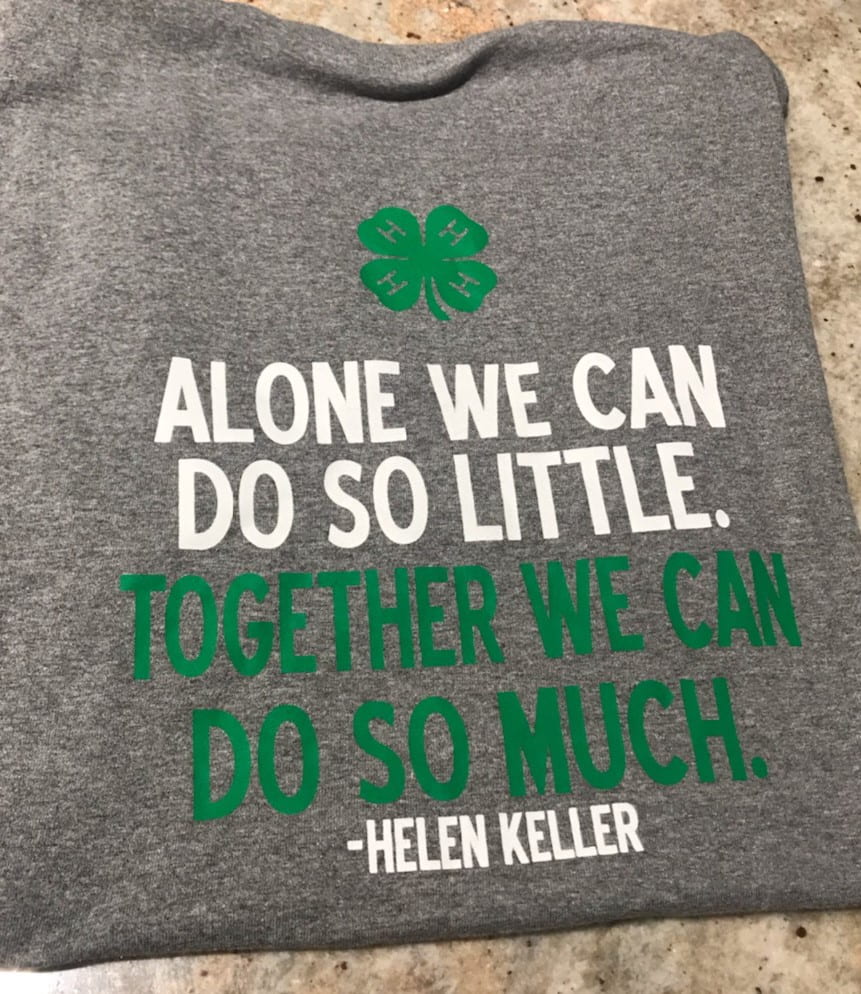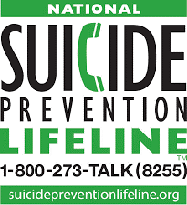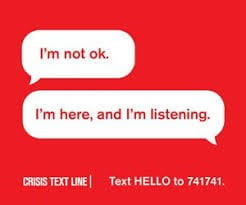by Ryan Kline, Extension Educator, Ross County, 4-H and Family & Consumer Sciences
As school bells ring, summer camps begin, and warmer days are here again, children across the nation head home to enjoy the summer. However, with the change in schedule, parents, camp counselors, and community leaders may see more warning signs or symptoms of mental health issues or challenges in children. Research published in the Journal of Developmental and Behavioral Pediatrics found that diagnoses of anxiety and depression have increased in children ages 6 to 17. As adults prepare to support youth with mental and emotional health issues, awareness is key to helping people feel comfortable in these challenging situations.
In honor of the youth struggling and managing mental health challenges, we celebrate National Children’s Mental Health Awareness Day. I will be honoring the day by promoting that my fellow educators, teachers, and volunteers know the warning signs of mental health issues in children.
Youth Mental Health by the Numbers:
- 20% of teens aged 13 to 18 live with a mental health condition.
- 18.8% of high school students had contemplated attempting suicide.
- 7 in 100,000 children aged 10 to 19 died by suicide in 2018.
- A 10-year gap is common between symptoms and taking action to improve mental health.
Youth across the country struggle with mental health challenges. Mental health affects children of all ages, from toddlers to teens, and different types of mental health challenges can become more prevalent throughout the developmental process, especially as young people approach their teen years. According to the Center for Disease Control and Prevention, children ages 12 to 17 are more commonly diagnosed with anxiety and depression, while 6- to 11-year-olds are more commonly diagnosed with behavior disorders. Many times, the challenge for parents is knowing whether the behaviors are symptoms of mental health issues versus the normative challenges experienced in adolescent development.
Identifying the Warning Signs in Youth
Change is not always a bad thing. As youth develop, personalities may adapt and behaviors may shift slightly; however, when these changes are sudden and drastic, there may be an underlying mental health issue.
- Withdrawing from Friends, Family, or Activities
Social interaction is healthy for youth. When children suddenly start isolating themselves from friends and family and losing interest in activities, that can be a clear sign that something may be happening with their mental, social, or emotional health. Isolation can be detrimental to the development of youth and can be a sign of a mental health challenge.
- Mood Swings/Out of Character Behavior
Noticing a change in behavior is an important first step to taking action to better a child’s mental health. Whether it is an action that is extreme or a slight change in behavior, checking in about feelings after an outburst can help youth better identify and manage emotions.
Commonly seen in a distinct change of behavior from fearless to fearful, children can develop fear or fear-driven behavior after trauma. When the fear is something that the child used to do like attending school or walking to the park, it can be a sign that something bigger is going on in the child’s life.
Despite their prevalence, mental health disorders are under treated, a situation exacerbated by the increased demand created during the coronavirus pandemic and a shortage of mental health providers. Analysis from the Youth Risk Behavior Survey found that 25% of youth aged 12 to 17 had received some sort of mental health treatment within the past year. As parents, educators, and society learn more about the impact of mental health on youth across the country, treatment rates may continue to grow.
What Can You Do as an Adult?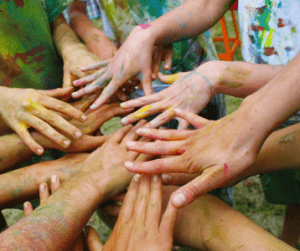
Ask Direct Questions
May times it can be difficult to ask questions about mental health. However, one of the best ways to check on our youth is to create open spaces for them to share and communicate about how they feel. Also, if a child is exhibiting behaviors associated with suicide, ask them directly about their feelings and intentions. A conversation can save a life.
Share Emergency Numbers
Encourage teens to save several emergency numbers to their cell phones so if the need arises they are prepared to assist someone in crisis.
Connect with a Professional
Whether it is a pediatrician, mental health specialist, or counselor, involving a professional is the best way to ensure that the child is receiving assistance. Teachers, volunteers, or community members can only do so much – there is a time and place for intervention.
National Children’s Mental Health Awareness Day shines a national spotlight on the importance of caring for every child’s mental health and reinforces that positive mental health is essential to a child’s healthy development. Understanding the impact of mental health on children is a crucial part of creating a bigger change. By identifying some of the symptoms or behaviors associated with mental health challenges, educators and community volunteers can better serve and develop healthier youth. Creating clear actions for better mental health can help to shape the future of children’s mental health.
Check out Ohio 4-H Mental Health Month resources and our grab-and-go resources.
*The Lifeline and 988: 988 has been designated as the new three-digit dialing code that will route callers to the National Suicide Prevention Lifeline. While some areas may be currently able to connect to the Lifeline by dialing 988, this dialing code will be available to everyone across the United States starting on July 16, 2022.
References
America’s Health Rankings. (2022). Mental health providers. https://www.americashealthrankings.org/explore/annual/measure/MHP
Bitsko, R. H., Holbrook, J. R., Ghandour, R. M., Blumberg, S. J., Visser, S. N., Perou, R., & Walkup, J. T. (2018). Epidemiology and impact of health care provider-diagnosed anxiety and depression among US children. Journal of Developmental and Behavioral Pediatrics, 39(5), 395‒403. https://doi.org/10.1097/DBP.0000000000000571
Bitsko, R. H., Claussen, A. H., Lichstein, J., Black. L. I., Jones, S. E., Danielson, M. L., Hoenig, J. M., Davis Jack, S. P., Brody, D. J., Gyawali, S., Maenner, M. J., Warner, M., Holland, K. M., Perou, R. M., Crosby, A. E., Blumberg, S. J., Avenevoli, S., Kaminski. J. W., & Ghandour. R. M. (2022). Mental health surveillance among children — United States, 2013–2019. Morbidity and Mortality Weekly Report, 71(Suppl-2),1–42. https://doi.org/10.15585/mmwr.su7102a1
Centers for Disease Control and Prevention. (2022, March 4). Data and statistics on children’s mental health. https://www.cdc.gov/childrensmentalhealth/data.html
Ivey-Stephenson, A. Z., Demissie, Z., Crosby, A. E., Stone, D. M., Gaylor, E., Wilkins, N., Lowry, R., & Brown, M. (2020). Suicidal ideation and behaviors among high school students – Youth Risk Behavior Survey, United States, 2019. Morbidity and Mortality Weekly Report, 69(Suppl-1), 47‒55. https://doi.org/10.15585/mmwr.su6901a6
National Alliance on Mental Illness. (n.d.). Mental health facts: Children and teens. https://www.nami.org/nami/media/nami-media/infographics/children-mh-facts-nami.pdf
National Institute of Mental Health. (2021). Child and adolescent mental health. https://www.nimh.nih.gov/health/topics/child-and-adolescent-mental-health
Pombo, E. (2021, May 7). Warning signs of mental illness in children. National Alliance on Mental Illness. https://www.nami.org/Blogs/NAMI-Blog/May-2021/Warning-Signs-of-Mental-Illness-in-Children
U.S. Department of Education. (2021). Supporting child and student social, emotional, behavioral, and mental health needs. https://www2.ed.gov/documents/students/supporting-child-student-social-emotional-behavioral-mental-health.pdf
U.S. Surgeon General. (2021). Protecting youth mental health: The U.S. Surgeon General’s advisory. https://www.hhs.gov/surgeongeneral/reports-and-publications/youth-mental-health/index.html
Zolopa, C., Burack, J. A., O’Connor, R. M., Corran, C., Lai, J., Bomfim, E., DeGrae, S. Dumont, J., Larney, S., & Wendt, D. C. (2022). Changes in youth mental health, psychological wellbeing, and substance use during the COVID-19 pandemic: A rapid review. Adolescent Research Review, 7, 161‒177. https://doi.org/10.1007/s40894-022-00185-6
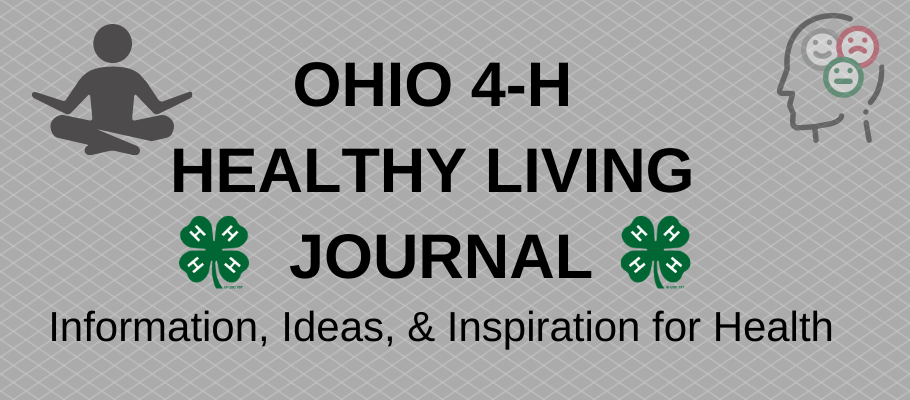
 By Amanda Raines, 4-H Educator, Hardin County
By Amanda Raines, 4-H Educator, Hardin County















